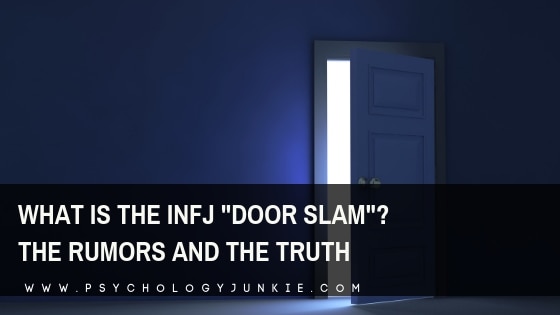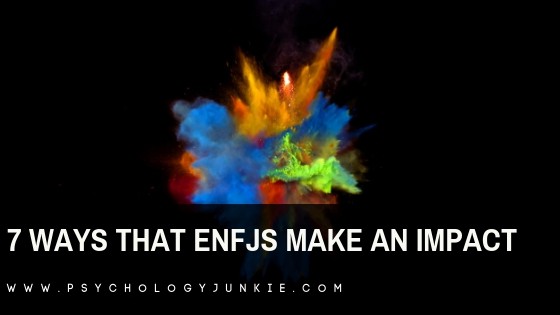Your Guide to the ISFJ and ESTP Relationship
I’ve spent quite a while pouring over different compatibility theories. Many have good reason as to why certain mental processes would “fulfill” or entice one brain wiring or another. However, when it comes to romantic pairings, humans don’t necessarily play by any dedicated structure. You feel what you feel for someone, regardless of how they process information. Certainly, particular minds more easily communicate with one another and hold more intrigue for one another. Circumstances may limit which types come into our spaces or who we come to take a liking for.
I would advise taking any “ideal pairing” theory with a grain of salt. In the case of ESTP and ISFJ romantic relationships, I’d like to be as real as possible about the strengths and potential problem areas these types can experience with one another. Compatibility based on typology seems more helpful to me if we look at natural strengths and weaknesses while also taking into consideration that individuals hold very different criteria in regards to what they want from a romantic partner. Not all ESTPs hold the same needs for an ideal match, just as not all ISFJs do. Thus, types that appear more aligned on the surface, may not provide an individual what they actually seek in a partner. This is where the “one type does not fit all” idea comes into play.

Individuals can, however, use typology to help assess what they desire in a romantic partner. Those who study type might gain some discernment on what they are really looking for as they compare commonalities within particular types based on their functions and subcategories. The ESTP may come to find that Si dominants sound far too restrictive or plain for a long-term dynamic. Or, the ESTP may find substantial comfort in the natural awarenesses of the ISFJ and imagine them the perfect type to settle down with. The same logic applies for the ISFJ as they consider the ESTP…shall we begin?
Not sure what your personality type is? Take our new personality questionnaire here. Or you can take the official MBTI® here.
Estimated reading time: 20 minutes
The ISFJ and ESTP Relationship Guide
ExxP vs IxxJ
Let’s start with the general, broad subgroups as they tend to reveal overarching needs of particular types.
From a general outlook, ExxPs (ESTP, ESFP, ENTP, ENFP) crave adventure and new experiences. “Freedom” is likely the most common buzzword for this subgroup. ExxPs tend to hold their autonomy to move forward dearly. Nothing bothers an ExxP more than outwardly imposed restriction.
For ESxPs (ESTP, ESFP), they tend to jump from one experience to another, chasing the newest adventure that lights them up. ESTPs depart from ESFPs in their mission: ESTPs fundamentally care about being present in reality and utilizing their improvisation skills to manipulate or fix the tangible (objects, bodies, situations, etc.). An ESTP might put their sensory intelligence to use by building houses, training in athletics, creating art, leading armies, or by being the first person to respond and help after an accident. The ESTP lives ready to move at any given notice, with their general interest being in the realm of controlling and manipulating the physical realm, with a special interest around what they can manage to do with their own bodies. ESTPs want to physically experience all that they can, even if risk is involved.
In sum, an ESTP craves adventure, experience, physicality, and improvisation. Thus, when it comes to a romantic partner, they need someone who will not only respect these aspects, but also play into them to some extent. An ESTP would be unhappy with a partner who held them back from truly experiencing and morphing the world. That’s not to say that any particular type couldn’t appreciate these needs, but certain types may more naturally find that drive of the ESTP appealing.
On the flipside, IxxJs (ISFJ, ISTJ, INFJ, INTJ) crave grounded anchors and certainty. “Stability” is a common buzzword for this subgroup. IxxJs tend to hold their expectations (small-scale Si plans or large-scale Ni plans) in high regard. Nothing bothers an IxxJ more than unexpected chaos getting in the way of what they intend to do.
For ISxJs (ISFJ, ISTJ), their will towards stability can look like moving through certain daily routines, upholding their responsibilities at work or home, and making sure practical needs are met. ISFJs depart from ISTJs in their mission: ISFJs fundamentally care about the comfort of other people and want to make them feel welcome. ISFJs appear at their best when they are tracking the needs of individuals in their life and making space for others to feel at ease. “There’s no place like home,” might be considered quintessential ISFJ folklore. ISFJs prioritize comfort and don’t want to pressure others outside of their comfort zones as they don’t like being pressured themselves.
In sum, an ISFJ desires stability, grounding, and the daily upkeep of the people they care for. Thus, when it comes to a romantic partner, ISFJs will need someone who respects their need to be dutiful and maintain what has already been established in their social networks and at home. An ISFJ would be unhappy with any partner who forced sudden change on them consistently or devalued their will to “keep the ship afloat.”
Clearly, some natural problems can arise when we examine the general ExxP drive to go-go-go (experimentally or psychologically) and the IxxJ’s drive to uphold and manage what already exists (in relationships or systems). The needs of these general groupings do seem to oppose each other. As the ESTP disregards risk in order to experience new feats, the ISFJ tries to stabilize what they have known to be true. The ESTP may find the ISFJ too worried about safety while the ISFJ may find the ESTP too devil-may-care. It would be easy for these partners to feel frustrated by the other if respect is not held firmly in the purview. A great question to consider, however, is whether the fundamental need of ExxPs to have freedom and the fundamental need of IxxJs to have stability are needs their partners must fulfill for them. To rephrase, does an ESTP need a partner who desires freedom, or can they give themselves the freedom to explore? Does an ISFJ need a stable partner, or can they give themselves the grounding they fundamentally seek? I’ll leave that for you to decide.
ST & SF Pairing
There are several different ways to split the types into subgroups, but I have chosen to split the types as shown (NF, SF, NT, ST) rather than into their more common form (NF, SJ, NT, SP) because I find it more helpful when considering overarching interests. When asking what ESTPs and ISFJs will converse about, it seems clearer to evaluate their compatibility when we look at what information they broadly care about.
- NFs: care about insights about people.
- SFs: care about facts about people.
- NTs: care about insights about things.
- STs: care about facts about things.
When considering long-term romantic pairings, it’s important to ask: Would I enjoy talking to this person about this information for years? Compatibility includes whether or not you can talk about the same general content with ease and interest. I personally find looking at the inner two-letter dichotomies more helpful when determining romantic compatibility as it’s fairly clear to see what might buzz in the mind of an ESTP or ISFJ. We’ll focus on the ST vs SF portion here, but I have listed the other subgroups as it might be helpful to see how all types might relate to one another.
- STs: care about facts about things.
- SFs: care about facts about people.
When considering compatibility, it seems fairly accepted that we want our partners to be different enough to be intriguing, but similar enough to have something to talk about. Knowing this, STs and SFs could be a great match. Both ESTPs and ISFJs fundamentally share the “lens” of concrete, factual information. These types will easily understand the concrete descriptions and explanations used by one another. Yet these types will have very different focal points. While the ESTP is gathering facts about things (vehicles, sports, technology, etc.) in order to have a better idea of how to manipulate these objects for improvisation, the ISFJ is gathering facts about people (likes, dislikes, where someone came from, etc.) in order to find ways to keep a calm and comfortable atmosphere for the people in their lives.
Does the ST-SF match sound like every sitcom couple, or is it just me?
The ESTP-ISFJ match does carry promise as their general outlooks don’t oppose one another. It may prove especially helpful that both types are sensors. One of the largest divides one type can have from another is whether they “speak the same language.” In this case, ESTPs and ISFJs do. However, it is important to consider that ESTPs might not enjoy hearing the ISFJ express their stored information on the people in their life and the ISFJ might not enjoy hearing the ESTP rattle off car parts or how best to manage a backflip. Being able to speak the same language doesn’t necessarily mean one type will find the other interesting.
My Two Cents
I was in an ST-SF dynamic for several years and did notice how easy it was to understand each other. I only noticed this “ease” after talking with several intuitives—especially those intuitives who used Ni. With intuitives, my brain tends to need more process time for comprehension and I tend to ask them more questions in order to understand where they are coming from. With sensors, I have far less questions to ask in terms of clarification and generally understand what they are saying whether my interest is piqued or not.
Although a sensor-sensor or intuitive-intuitive match does make your partner feel “closer” to your world or experience, it doesn’t mean communication is going to be perfect or interesting. In my ST-SF match, I’m certain that we both experienced some boredom in regards to our focus areas because I wanted to talk about the people around me and they wanted to talk about their favorite model of car. Having such opposing interests can hurt compatibility. The harsh truth is that you can fully understand what someone is saying to you and have no interest in what they are saying. This isn’t to say that STs and SFs will generally find each other boring at all—I stayed with my ST for eight years—but it takes more than shared language to get along.
Inverse Sensing Functions (Se vs Si)
Dominant Functions
ESTP: Se-Ti-Fe-Ni
ISFJ: Si-Fe-Ti-Ne
Se: Experiences the objective external world in real-time. Focuses on the present reality and manages the tangible data. Interacts directly with people and objects.
Si: Obtains and catalogues subjective experience, comparing past situations to present ones. Determines shifts in people, things, places, etc. Develops long-standing impressions that make one “go back in time” to significant moments through an object, phrase, person, etc.
ESTPs and ISFJs both lead with a dominant sensing function, however, the orientation of these functions are directed in opposite directions. The ESTP’s Se will entice them towards new experiences and encourage them to manipulate objective, tangible objects in the outer world. Objective is especially important here because objects carry no weight for ESTPs. Boxes are to be moved, clothes are to be worn, and so on. No emotional or sentimental charge is given to an object through Se. Certainly, a shared experience with another person (such as an Se dominant woman riding dirt bikes with her partner) could equate to sentiment, but the dirt bike itself is replaceable. It’s an object. The ISFJ’s Si directly opposes this “objective” nature when it comes to objects. Objects carry weight for the Si dominant. Sentiment can be held within objects, making objects rather subjective in nature (either angels or demons, as Carl Jung liked to say). Were the same dirt bike riding woman an ISFJ, they would likely cherish the dirt bike and find it irreplaceable because it is representative of her partner and their shared time. (The ISFJ rider would also be much more cautious.) Si enjoys experiences, certainly, but it’s in the post-processing that impressions are lodged in the psyche. The after-effects matter more to the ISFJ than the experience itself, ultimately.
Although ESTPs tend to devalue the importance of an object and ISFJ amplify the importance of an objects—which might be a red flag for some people who fall into these types—their natures do not necessarily encroach on each other on purpose. Se is objective, Si is subjective. Assuming the ESTP is aware the ISFJ is sentimental about objects and the ISFJ is aware that the ESTP isn’t, this pairing could easily hold space for each other’s natures. (AKA: Don’t throw you’re your ISFJ partner’s old movie tickets, ESTPs! It’s just paper for you, but it’s a memory portal for them.) As long as the ESTP acknowledges that the memory of the event will matter more than the experience itself for their ISFJ partner and as long as the ISFJ partner does their best to be completely present in the moment with their ESTP to make their experience better, both could find common ground in their preferences.
Inverse Intuitive Functions (Ni vs Ne)
Inferior Functions
ESTP: Se-Ti-Fe-Ni
ISFJ: Si-Fe-Ti-Ne
Ne: Sees theoretical possibilities and abstract connections within the outside world. Finds connections between people, things, places, etc. Recognizes potential avenues that one might take towards a new idea or exploration.
Ni: Manifests theories, visions, stories, and archetypes from the subjective, internal world. Finds abstract connections and relationships from a birds-eye view. Focuses on underlying meanings and repeated patterns.
Three words you should never say to an ESxP or an ISxJ: Follow your intuition.
ESTPs and ISFJs diverge greatly in terms of their sense of risk, which I would argue is due to their inferior intuition functions. ESTPs are constantly seeking the next big adventure with their Se and because of their inferior Ni, they don’t always realize when too far is too far. They might underestimate how an action taken now will affect them in the future. On the flipside, an ISFJ worries quite readily about potential negative possibilities garnered from their inferior Ne and may see any deviation from upholding the past in a controlled environment too dangerous. ESTPs want to have hands-on learning through tangible situations that build their knowledge, but the ISFJ might find their way of learning hazardous. ISFJs ultimately don’t want to see anyone get hurt, which comes from a good place, but the ESTP might see their worry as nagging.
These natural urges (which play into the “freedom” vs “stability” dynamic) can make bonding a real problem for these types. ESTPs and ISFJs may find that their partner does not support their primary mode of being or “core” need. ESTPs and ISFJs may imagine something as simple as their “perfect date” completely differently. While the ESTP is head-over-heels about dirt bike riding together, the ISFJ is daydreaming about getting cozy on the couch watching a cute film.
Getting ISFJs out of their comfort zone is fairly difficult, which could easily irritate the adventure-seeking ESTP. An ISFJ might, for example, refuse to even get on a dirt bike if they’ve never been on one because their inferior Ne makes them worry about a myriad of potential repercussions (crashing, pain, winding up in the hospital, etc.). ISFJs are very sticky about things they have never experienced before, especially if some kind of harm could come their way by trying that new experience. If the ESTP is able to talk an ISFJ into a daring experience (motorcycles, sky-diving, etc.), the ISFJ is most likely going to worry leading up to the event and will be the one wearing more protection than necessary. The ESTP might be constantly disappointed by the ISFJ’s inability to just “jump in” and go for it while the ISFJ might question the ESTPs inability to care for everyone’s safety and call them reckless.
Shared Judging Axis (Fe-Ti)
Shared Thinking & Feeling
ESTP: Se-Ti-Fe-Ni
ISFJ: Si-Fe-Ti-Ne
Ti: Analyzes and categorizes information with logic. Zeros in on inconsistencies. Breaks information down to its essential parts.
Fe: Responds to the emotional environment based upon cues by others. Focuses on the cohesion of individuals. Makes conscious judgments based on cultural or community standards. Encourages taking others into consideration when questions of ethics arise.
Shared judging functions are more often cited for higher rates of compatibility than a shared perceiving axis is. Given that individuals will make decisions on information based on their judging functions, it’s understandable.
The flipped judging axis grants a balance to the communication between ESTPs and ISFJs. ESTPs can use their Ti to analyze the ISFJ’s Fe judgments while the ISFJ’s Fe can affirm the ESTP’s Ti deduction skills. This might look like the ESTP asking the ISFJ’s Fe if they read the room correctly or the ISFJ asking the ESTP’s Ti if something they read or experienced logically makes sense. The interplay of the Fe-Ti axis can be quite helpful for both types.
As both ESTPs and ISFJs give secondary preference to their primary judging function (Ti or Fe), they are also both perceivers first and judgers second. Neither ESTPs nor ISFJs make immediate judgments unless they have experienced a similar predicament before. Both parties will take in information before making a firm decision on it. This functional line up could be helpful when making collective choices.
Do Their Missions Align (SeTi vs SiFe)?
ESTPs and ISFJs have quite different missions. Although they are not opposing missions, they do not necessarily support each other. While the ESTP utilizes their SeTi to manipulate and experience their environment, ISFJs utilize their SiFe to make others feel seen, heard, and comforted. An ESTP-ISFJ couple may be able to support each other in their endeavors on a basic level, but may not become fully integrated into each other’s worlds.
ESTPs appear at their best when they are improvising in the objective world. ESTPs utilize their SeTi to obtain physical mastery over as many objects and situations as possible. They enjoy using the full range of their senses as they partake in reality. ESTPs are the types to take common objects and to utilize them in unique ways. Aladdin’s (Disney) playful way of utilizing the structure of his physical environment to evade Agrabah’s security force is a great example of how an ESTP might apply their natural intelligence to manipulate reality for their benefit. (Parkour!) Any connection that gets in the way of ESTPs getting hands-on experience with some risk involved will not fulfill them. The ISFJ’s mission appears outside the realm of ESTP’s, although both can coexist without issue (assuming that the experiences ESTPs wish to have don’t encroach on the ISFJ’s sense of safety).
ISFJs appear at their best when they are comforting others and providing them a safe place to be. ISFJs utilize their SiFe to first gather information about an individual and then to positively affirm these details. ISFJs are the types to go over to a friend’s house, notice the pillows on their couch or the photos on their wall, and to ask their friend how they came about getting those things. ISFJs will days or years later, reference these items to express a sense of connection. For the ISFJ, the more details they pick up on someone, the more their inner mosaic of that person builds, and the firmer their connection forms to that person. Once an ISFJ has a good idea of what an individual spends most of their time thinking and doing, they know what topics or memories to bring up with that person in order to have a pleasant interaction. Sally’s (The Nightmare Before Christmas) ability to track the concrete needs of her community and her love interest is a great example of how an ISFJ might apply their natural tendencies for calming atmospheres with their social consideration. For the ISFJ, nothing matters more than to make people feel welcome around them. Any connection that gets in the way of ISFJs nurturing others will not fulfill them.
Other Theories & Perspectives
It may prove helpful to look at some established compatibility theories to help judge the ESTP-ISFJ match.
In Gifts Differing, Isabel Briggs Myers (co-creator of the MBTI) argues that the best type combinations have three shared letter dichotomies in common. Myers does take functions into consideration, believing that having completely different functions gives individuals a whole other outlook on the same situations. In her view, introverts should be paired with introverts and extroverts with extroverts, given that the introvert doesn’t want to be dragged along by the extrovert nor the extrovert held back by the introvert. Individuals who share a sensing preference or an intuitive preference are best matched as they care about the same general realm of information. Feelers should be with feelers as their judgments are made around ethics and thinkers should be with thinkers as they make their decisions around logical assessments. In the ideal pair, Myers argues that judgers should be with perceivers given they could entice each other with different outlooks. However, if one other letter dichotomy is missing (I-I, E-E, S-S, N-N, F-F, T-T) , it would be ideal for a judger to be with a judger or a perceiver to be with a perceiver.
Myers rates the most compatible types as follows:
Based on Myers’ compatibility theory, an ESTP-ISFJ match wouldn’t be recommended as they only share one of the four letter codes. For Myers, this translates to sharing limited interests as well as both parities having very few of their individual needs met. ESTPs and ISFJs sharing one function axis did not seem to matter, in Myers’ view.
David Keirsey, another renowned typologist, supposedly had a few different type compatibility theories before settling on his idea. Keirsey argued that opposites attract and that sharing the same language is fundamental for a relationship. Thus, introverts should be with extroverts, sensors should be with sensors, intuitives should be with intuitives, and a couple’s judging axis should be the same.
Keirsey rates the best type pairings as follows (these type pairings are the most commonly reinforced pairings that I’ve personally seen by people interested in typology):
Based on Keirsey’s compatibility theory, an ESTP-ISFJ couple would be the ideal match! Both are sensors, both share a judging axis, and the pair includes one extrovert and one introvert. Yay! Can you hear Keirsey clapping?
So, Are They Compatible?
It’s important to recognize that different people desire different dynamics in their romantic choices. For some, going everywhere with their partner is highly important and they want their partner to share in their adventures. For others, they simply want someone they can talk to for a few hours before departing towards their own individual projects. In my view, type compatibility is not so much a question of whether certain functions work well with one another on a micro level—one can even be attracted to a function that they do not use consciously—but the macro level. The question of compatibility lies in whether individuals are pursuing pairings where their needs will be met or not.
If we take into consideration all aspects of the ESTP and the ISFJ (inclusive of subgroups and cognitive functions), it seems this pairing would be ideal for individuals who want to share the same language (sensing/factual/concrete), want to express their emotions and logic in a similar way (Fe-Ti), can work with the push and pull dynamic of risk and safety, want somewhat of an opposite, and can meet their own broad-based needs (freedom, stability). This pairing would not be ideal for individuals who wish to do everything belong-side their partner, want to think from similar frames, want a collective mission, want to care about the same subject matter (people vs things), or want a partner who strives towards similar broad-based needs (freedom, stability).
The ESTP-ISFJ coupling may also influence personal growth! The ESTP may influence the ISFJ to accept risk and the ISFJ may influence the ESTP to look before leaping. This would not be an immediate exchange of wisdom as their natural inclinations are well-ingrained, but the potential to grow in this area is present. The functional arrangement of the ESTP and the ISFJ are not set up for general ease in a romantic situation, as other pairings might be, but the pairing could prove romantic if they found a way to fully appreciate what each other brings to the table.
What Are Your Thoughts?
Did you enjoy this article? Do you have any thoughts or perspectives to share? Let us know in the comments!
Find out more about ISFJs and ESTPs:
24 Signs That You’re an ISFJ “Protector” Personality Type
24 Signs That You’re an ESTP “Daredevil” Personality Type
Want to Know More?
Find out more about your personality type in our eBooks, Discovering You: Unlocking the Power of Personality Type, The INFJ – Understanding the Mystic, The INFP – Understanding the Dreamer, and The INTJ – Understanding the Strategist.
About the Author:


Subscribe to Our Newsletter

Want to discover more about personality type? Get the inside scoop with Susan Storm on all things typological, along with special subscriber freebies, and discounts on new eBooks and courses! Join our newsletter today!









